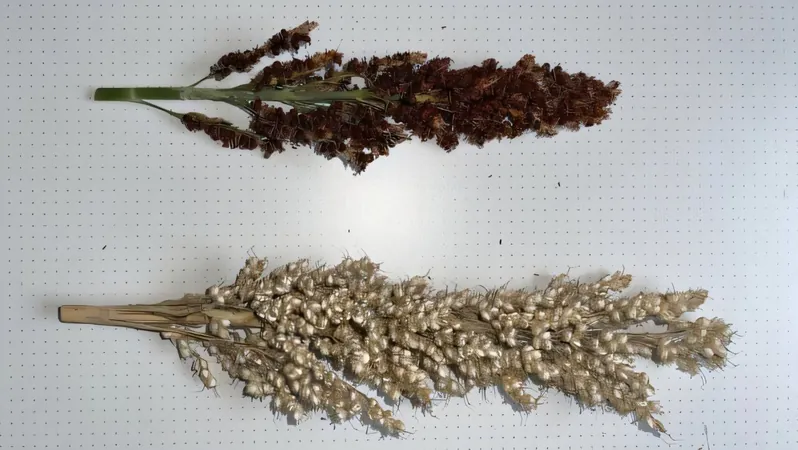
Unlocking the Future of Food: How a Gene Switch is Making Sweet Sorghum Resilient to Salt Stress
2025-05-06
Author: Rajesh
The Future of Crops: Sweet Sorghum's Incredible Adaptability
As the world grapples with a surging population and escalating food demands, sweet sorghum emerges as a superstar in agriculture. Renowned for its ability to thrive in extreme conditions, this mighty crop is not just resilient but can even flourish in salty soils, enhancing its sugar output.
Breakthrough Research: The SWEET13 Gene Switch Revealed
An extensive study by a global team, including experts from the Karlsruhe Institute of Technology (KIT), has pinpointed the SWEET13 gene switch as the key to directing sugar into the grains of sweet sorghum. This game-changing discovery, detailed in the journal *Scientific Reports*, could revolutionize food security efforts.
Combatting Climate Change Challenges
With climate change posing a dire threat to agricultural productivity—especially as rising sea levels lead to salinization of fertile land—dependable crops like sweet sorghum could be a lifeline. As soil salinity increases, traditional crops struggle, making sweet sorghum's ability to flourish in adverse conditions all the more crucial.
Innovative Breeding for a Sustainable Future
Professor Peter Nick and his team at KIT's Joseph Gottlieb Kölreuter Institute have been tirelessly exploring sweet sorghum's potential. Their pioneering work has led to the development of sugar-rich sorghum varieties, ideal for generating biofuels and even new materials. According to Nick, "The remarkable ability of certain varieties to produce more sugar in saline environments could redefine energy production and nutrition on a global scale."
The Ingenious Mechanism Behind Sugar Storage
The study revealed that different sweet sorghum varieties have unique ways of storing sugar; some pack it into their stems for biofuel production, while others store it in seeds, contributed directly to human diets. Dr. Eman Abuslima, a key researcher, explains how SWEET13 acts as a switch that channels sucrose from photosynthesis into the grains, unlocking an efficient pathway for sugar accumulation.
A Solution for Salinized Land
With advanced breeding techniques, the SWEET13 gene can be integrated into various sorghum strains. Tools like polymerase chain reaction (PCR) enable early identification of successful plant hybrids, igniting a promise for communities battling salinity issues. Regions like the Nile Delta and parts of Italy are already experiencing the adverse effects of soil salinization, but sweet sorghum could be their agricultural savior.
Conclusion: A Sweet Hope for Humanity's Future
As we face the dual challenges of climate change and feeding billions, the innovative research surrounding sweet sorghum and its resilient traits offer a beacon of hope. By harnessing the power of genetics, scientists are paving the way for a more secure and sustainable food future.


 Brasil (PT)
Brasil (PT)
 Canada (EN)
Canada (EN)
 Chile (ES)
Chile (ES)
 Česko (CS)
Česko (CS)
 대한민국 (KO)
대한민국 (KO)
 España (ES)
España (ES)
 France (FR)
France (FR)
 Hong Kong (EN)
Hong Kong (EN)
 Italia (IT)
Italia (IT)
 日本 (JA)
日本 (JA)
 Magyarország (HU)
Magyarország (HU)
 Norge (NO)
Norge (NO)
 Polska (PL)
Polska (PL)
 Schweiz (DE)
Schweiz (DE)
 Singapore (EN)
Singapore (EN)
 Sverige (SV)
Sverige (SV)
 Suomi (FI)
Suomi (FI)
 Türkiye (TR)
Türkiye (TR)
 الإمارات العربية المتحدة (AR)
الإمارات العربية المتحدة (AR)